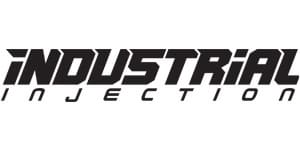Any large asset purchase comes with inherent road blocks, but buying a house or car is particularly daunting. If you’re buying a used model, you can’t always be sure how the previous owners took care of it. So if you’re buying a used car, what do you do?
You can normally get a pretty good understanding of how the vehicle was handled by looking over the exterior of the car as well as the maintenance records, but how can you snuff out hidden flaws? Below there are a few pre-purchase used car inspection tips to cover you’ve checked every crack and crevice, and are sure you’ve avoided buying a lemon.
1. GO OVER THE INTERIOR/EXTERIOR OF THE CAR
When going through your initial inspection, the first step is obvious, does it pass the eye test? Glance over the body, and inspect each panel. Are there any dents or broken parts? Does the vehicle appear to have frame damage? What does the suspension look like? Make and thoroughly go through a checklist.
Do your research beforehand, and establish if the model has issues that are wide scale or trending. Establish if you are going to have to invest additional resources after your purchase for repair parts like tires, brakes, maintenance service, etc.
While inside the car, the biggest thing you want to pay attention to is the dashboard. If it lights up like a Christmas tree, it may be a good idea to just walk away. Joking aside, ask the owner about the check engine light or any other lights that may show.
I would also recommend you bring a check engine light reader, for it will allow you to know if the owner cleared the codes on the car beforehand. Make sure that the air conditioner works properly and check all additional functions in the car like the radio, the lights, etc. You should already know what the mileage is beforehand, but make sure that it aligns with the post you saw about the car. A car dealership trick, inspect the model’s cigarette lighter. If it’s clean or unused, that is typically a sign that the car has not been smoked in, or generally mistreated.
If it is a newer model with a lot of miles, those are actually better because there is a high likelihood that those miles are highway miles. Highway miles are easier on the car while lowering the price for you.
2. LOOK UNDER THE HOOD
The next thing you are going to want to do is to look under the hood. Obviously, perform basic tasks like checking the oil and the coolant. The big thing you are going to want to look at is the engine. What kind of oil has the vehicle used? Consider flushing the intake with a cleaner to extend the engine’s life.
Make sure there are no leaks that would be evident by looking underneath the car. Next, make sure there is no corrosion around the engine. Finally, check the timing belt and make sure that the head gasket isn’t blown. If you aren’t an expert, bring a resourceful friend to help inspect the vehicle with you, or take it to a shop and have a diagnostic test run.
Also, ask the owner beforehand if there are any maintenance issues with the car. This will ensure that you aren’t surprised down the road.
3. RUN AN ACCIDENT HISTORY REPORT
The digital revolution has provided a significant leap in the used car buying process. One of the readily available resources available for car buyers now are vehicle history reports. Kelly Blue Book, Carfax, and Edmunds are all independent agencies that run vehicle history reports based on the model’s VIN number,
The reports vary in what they offer based on which service you use, but you can find out information like accident history, the number of previous owners, if the vehicle has been issued a ‘branded’ title’, and more. Some of these reports cost money, but it’s a valuable service as it can help you avoid buying a car that could cost you a fortune down the road.
4. GO FOR A TEST DRIVE
The test drive is by far the most important part of inspecting and eventually buying a used car. When on the test drive, make sure everything runs smoothly. Test the shifter to make sure that the transmission shifts smoothly.
Speed up on the highway and make sure there isn’t something wrong with the speed sensor. Another thing is to make sure the brakes are in good shape. Ensure that the car can stop on the dime and make sure that it doesn’t rattle the wheel when you do it. Keep your ears open to weird noises that the car may experience.
Also, make sure that you can make a 90 degree turn without any clunking around the wheel well. This could mean that the brakes are bad. In the end, you want to make sure that the seller of the car is fully transparent with you. You are going to be spending thousands of dollars for a used car and you deserve it to work properly.
Again, ask for service records and vehicle history. Make sure there were no accidents with the vehicle and ask how many owners there were. If you follow these steps, you will be fine buying a used car.
SEEK MULTIPLE OPINIONS, CONSULT AN EXPERT
Car buying is not an easy process. But luckily for consumers, there has never been more resources available to ease the process. If you’re not sure about something, don’t hesitate to do more research or get an additional opinion.







